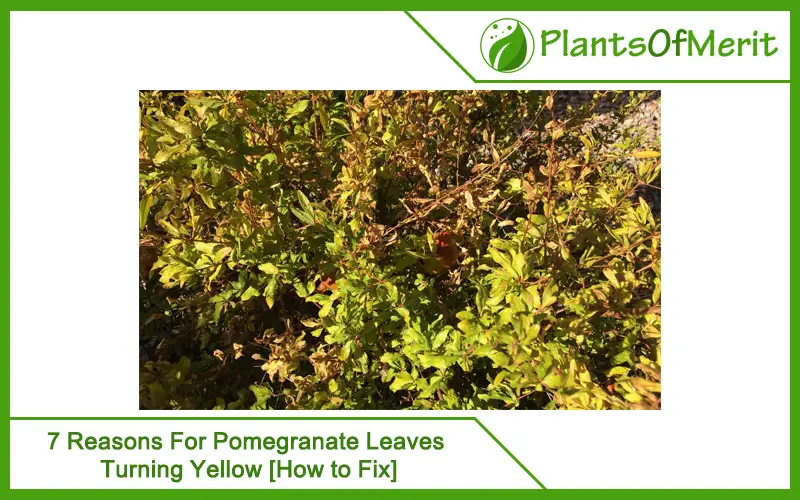Pomegranate isn’t just a good fruit but also an ornamental plant. Many people keep this plant to enhance the appearance of their indoors. If you’re a plant lover, you must have come across the pomegranate plant willing to add it to your plant collection.
Growing a pomegranate tree isn’t very difficult but it’s not easy either. You must take care of all conditions including proper sunlight. Before planting the seedling, you must do proper research about the requirements of a pomegranate tree to grow properly. If you take proper care of the pomegranate tree, it will not only produce good quality fruits but will also look good. Fresh leaves make the plant look way more ornamental and bring in positivity in and around the space they are planted.
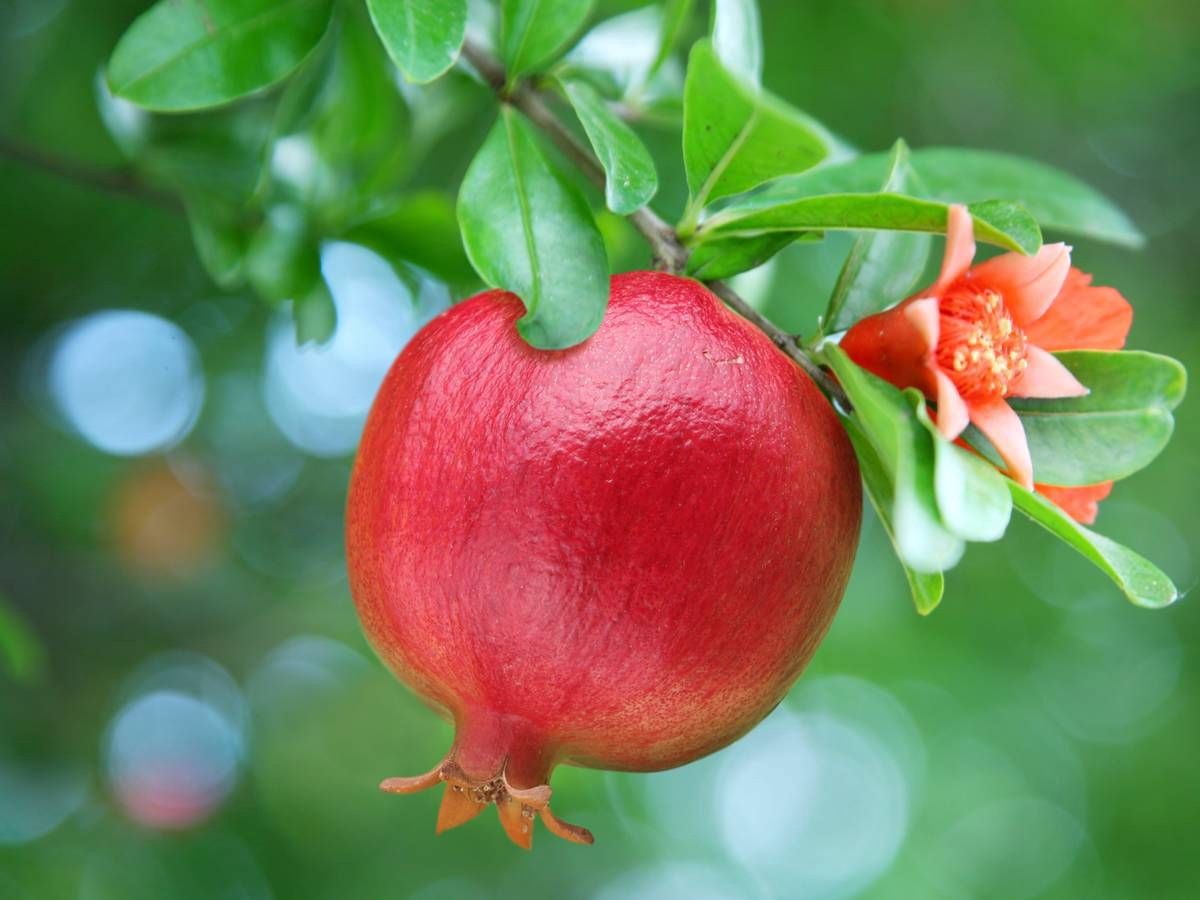
Yellow leaves are a sign that your favorite plant isn’t in a good condition. This is alarming particularly if it happens right before the fruiting or blooming period of the plant. You will be surprised to know that this can cause severe damage to the quality of fruits produced by your pomegranate trees.
There can be a drastic impact of these damage signs on your pomegranate plant. So, you must take the steps required to stop leaves from turning yellow. You also need to provide proper treatment to your plant before things are damaged. This post will further guide you about the various reasons for the yellowing of pomegranate leaves along with how you can fix them.

Why are Pomegranate Leaves turning yellow?
You might be wondering the causes for pomegranate leaves to turn yellow. To answer this, there are many reasons responsible for the yellowing of pomegranate leaves. Improper soil and imbalance in watering are just a few to talk about.
Here are some other causes for pomegranate leaves to turn yellow:
1. Transplant shock
There is a lot of stress that newly grown pomegranates trees go through because of changes in their position and place. This can lead to the yellowing of the pomegranate leaves. This is known as Transplant shock. It is very commonly found in the pomegranate trees which are planted newly.
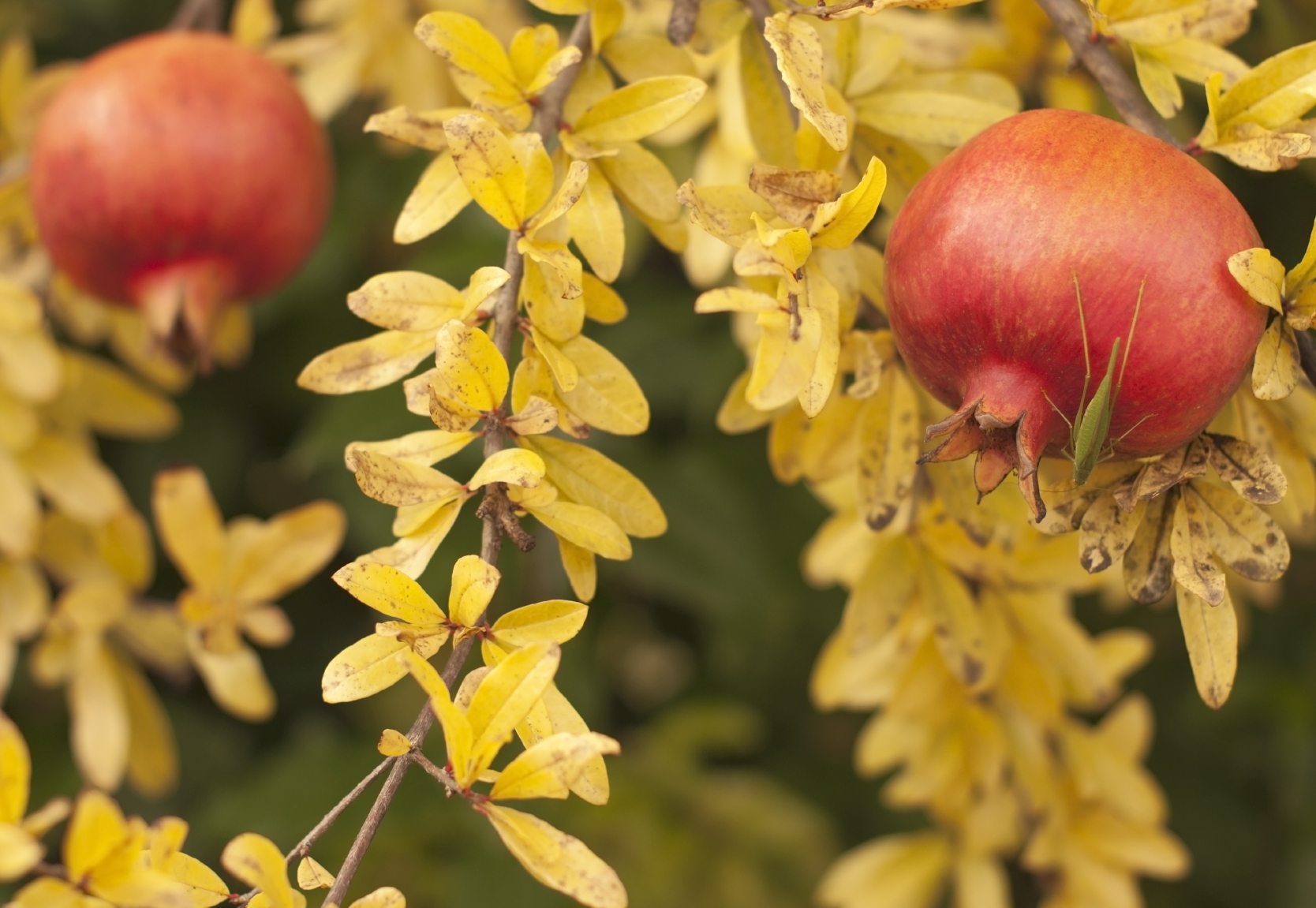
It will take time for the pomegranate trees to get adjusted to the new conditions. However, with the proper care, they can recover quickly.
Solution
Start watering your pomegranate trees just after the transplantation is complete. Also, include a 2-3 inches thick layer of mulch near the base of the tree. But you must keep them at a distance from getting in direct contact. Keep them protected from forest and cold weather. The pomegranates will also require time but yellow leaves will turn green gradually.
2. Winter damage
Pomegranate is a deciduous tree and we all know that. So, as winter starts, the leaves of this tree start turning yellow before dropping off. This is an organic process they follow to stay protected from winter damage. So, you don’t have to worry as just a little bit of watering and care will do it for you. Spring will then bring lots of flowers and green leaves for you.

Solution
Start pruning nearly half of the tree before the fall season. So, the tree doesn’t have to take a lot of stress to produce a lot of food. Keep watering them for 7 to 10 days in the winter season. If you have an ornate potted pomegranate, keep them indoors.
3. Low sunlight
Pomegranates are a kind of tropical tree. So, they require ample sunlight to grow. Without sufficient sunlight, they won’t be able to make food for their consumption. As an outcome of lack of food, there is yellowing of leaves.

Solution
Plant your pomegranate tree in a sunny area whenever you’re transplanting the seedlings. Ensure that they get almost 7 hours of uninterrupted sunlight every day. If you have attractive pomegranate trees then you must ensure that you take them outdoors each day to get sunlight. You can also place them beside the window where they get ample sunlight.
4. Pest controls
Mealybugs, aphids, whiteflies as well as spider mites attack your pomegranate plant and cause curling and yellowing of their leaves. These bugs mostly lay eggs and such all nutrients from leaves. As an outcome of this, the leaves of the pomegranate plant turn yellow due to a lack of nutrients.
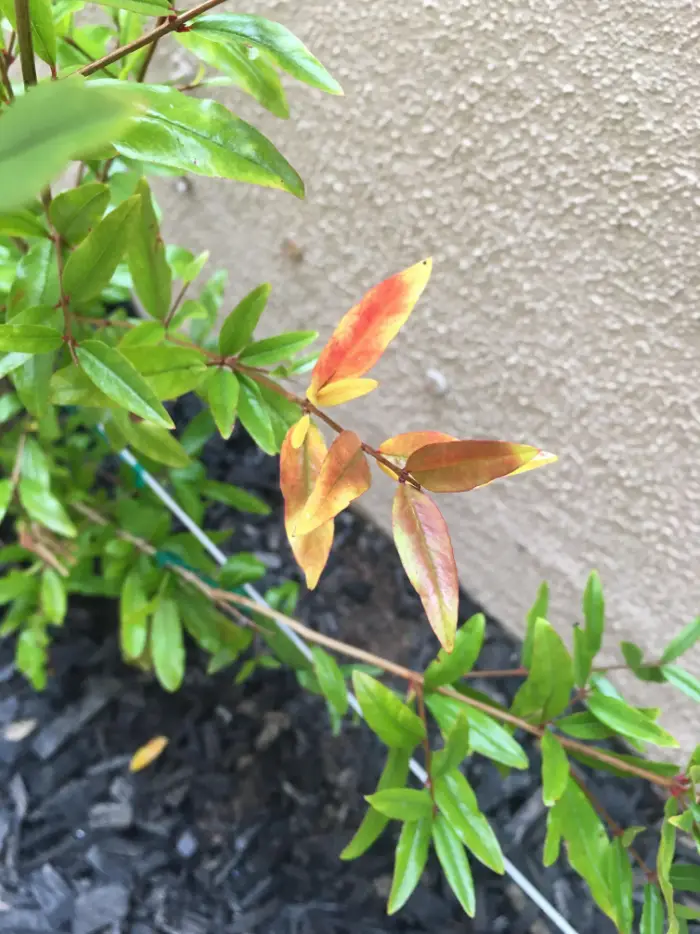
Solution
Aphids along with other bugs must be killed away immediately. The reason is, that they can transmit various deadly diseases to pomegranates. But, you must make sure to select an insecticide that doesn’t cause harm to the pomegranate fruits. Choose a good insecticide that is safe for your plant. There are some easy homemade recipes you can try to kill these pests.
- Tomato leaf spray
Tomato leaves have an organic insecticidal compound that is fatal for insects but safe for fruits. The ingredients you require are 1 gallon of water and 5 cups of tomato leaves. Start by chopping the tomato leaves. Soak all of them overnight in one cup of water. Then, strain out all leaves. Add the leftover water. Spray this on the leaves two times a week.
You must note that in case of any homemade recipe, you need to try out a small amount of this mixture in the small leaf of the pomegranate tree. Wait for a while to see its reaction before applying the rest of the mixture. If you don’t find it to adjust, add water to the solution and make the mixture mild. Then, try this mixture again on a small leaf.
- Basil tree
The ingredients you need for this recipe are 3 liters of water, 3 cups fresh basil, and 4 teaspoons liquid soap. Start by boiling water in a pot. Remove the pot from the heat. Add basil leaves and place the lid on the pot. Allow the water to cool down and start straining the leaves. Mix liquid soap and put this mixture into the sprayer.
- Neem oil
In this recipe, the ingredients you need are 1-gallon water and 3 tbsp. Neem oil. You need to add all of them together and spray the mixture twice each week on your pomegranate plants. You can use this for the prevention and control of aphids
5. Unfit soil
Pomegranates require their soil to be a little acidic. The pH value of this soil is nearly 5.5.5-7. So, if the soil pH is not in this range, they can cause leaves to be turned yellow. Pomegranates can’t grow properly if the soil is alkaline. In alkaline soil, pomegranates don’t get all the required nutrients. This can cause leaves to become yellow.

Solution
If it is not winter and the leaves of your pomegranate tree turn yellow, you must keep a check on the pH of the soil using a pH meter as they are quite inexpensive. You must have one for use. If the nature of the soil is alkaline, use natural compost to make the pH lower.
6. Nutrient imbalance
Under fertilization and over-fertilization both can make the leaves of your pomegranate tree turn yellow. For instance, if there is a lack of Nutrients in the pomegranate plant, the leaves will start turning yellow. Also, if they get a lot of Nitrogen, their root starts burning. It also causes yellowing of the pomegranate leaves. This applies to all other important nutrients required for the plant to grow.
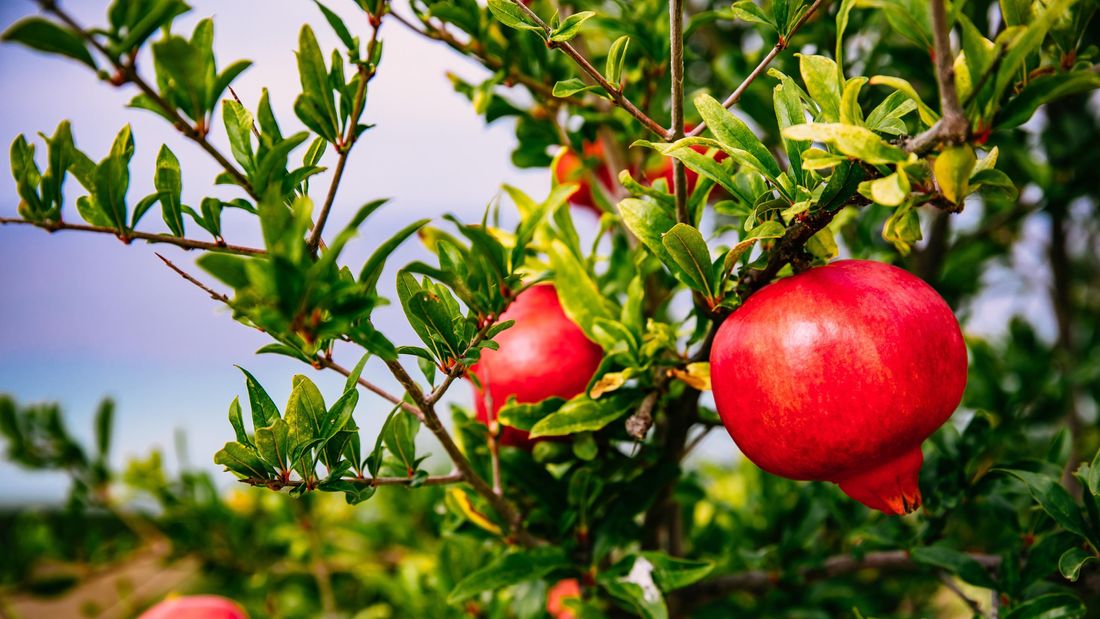
Solution
You need to provide the proper amount of fertilizer to the plants. To ensure the good production of fruit, pomegranates require ample nutrients. But you must keep in mind that over usage of fertilizer can cause the plant to die. Use fertilizer once in January. But, regular fertilizers mostly have a lot of Nitrogen. So you must choose a fertilizer that doesn’t have high Nitrogen content.
7. Improper watering
When pomegranates are young, they require sufficient water to grow. But, if you overwater the plants, it can cause the root to rot and leaves to turn yellow. Also, if they are not watered sufficiently, they will turn yellow and wilt. So, the important part is that the soil has to be drained properly. Both dry and waterlogged soil will cause harm to the trees. So, the best way to get rid of this problem is by checking the soil using a moisture meter.

Solution
Keep watering once a week in the late winter and early spring. In the summer season, water every alternative day during the morning. Don’t water in the evening as it will lead to fungal diseases. Use wood chips or natural mulches on the surface of the soil to help the soil in retaining moisture. But make sure you keep the mulches at a distance from roots.
Conclusion
If you find the leaves of your pomegranate tree to turn yellow, you don’t need to worry as the reasons are already discussed above. There can be no other reason than the ones which are mentioned here. You’ll also find the solution to each problem. All that you need to do is confirm the cause and use the right solution.

